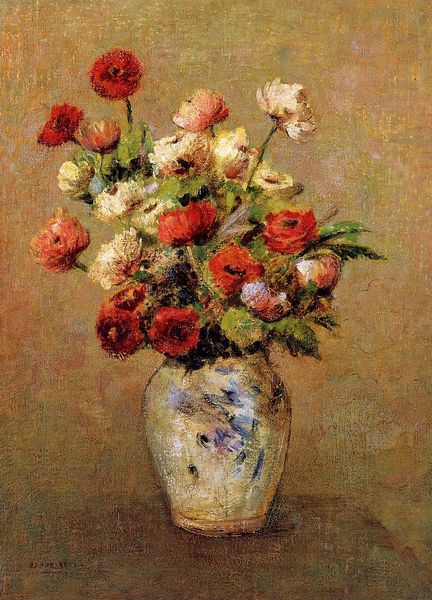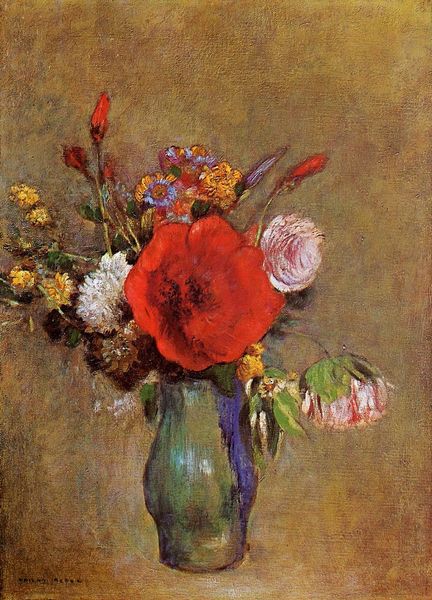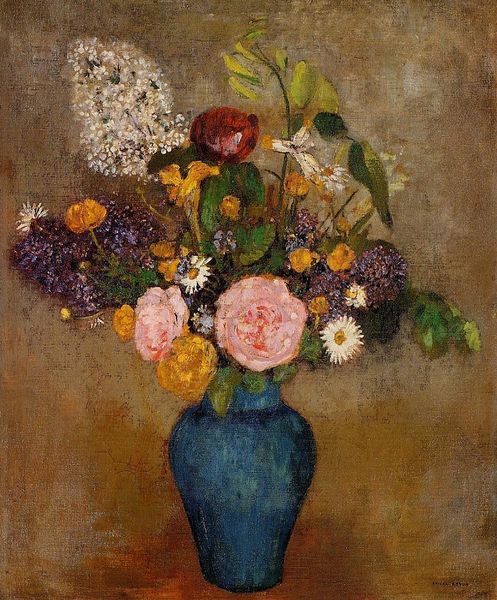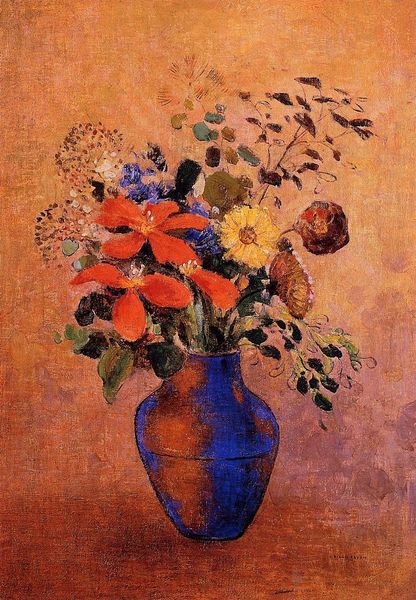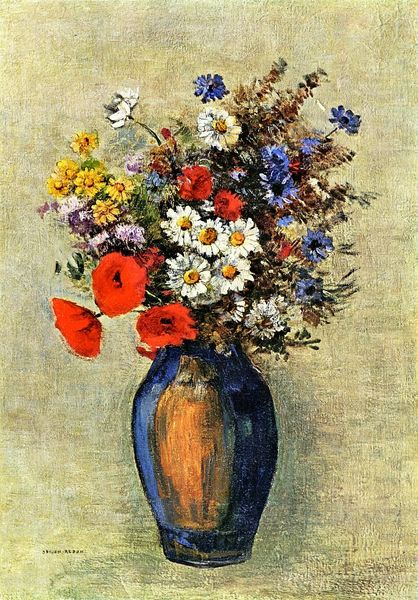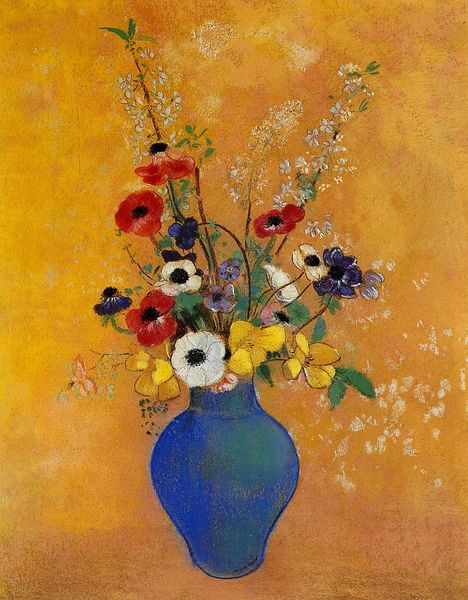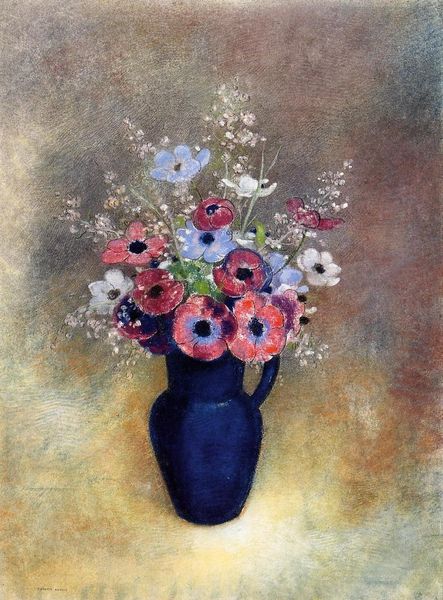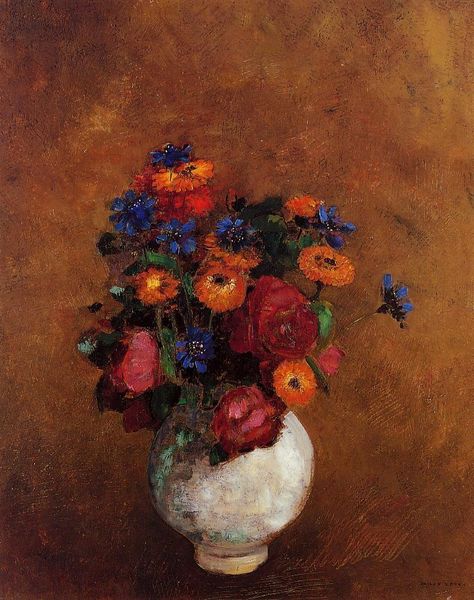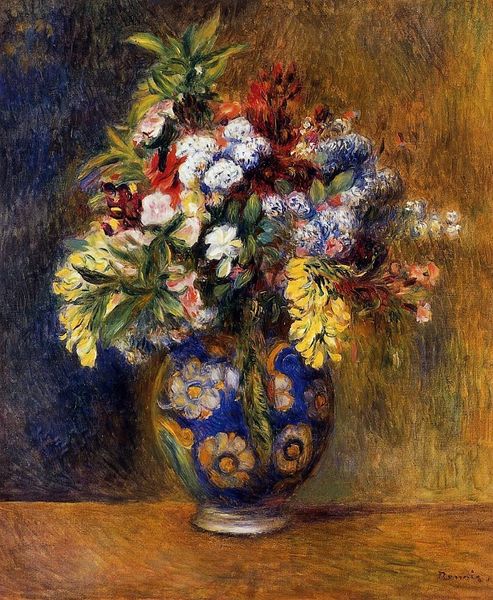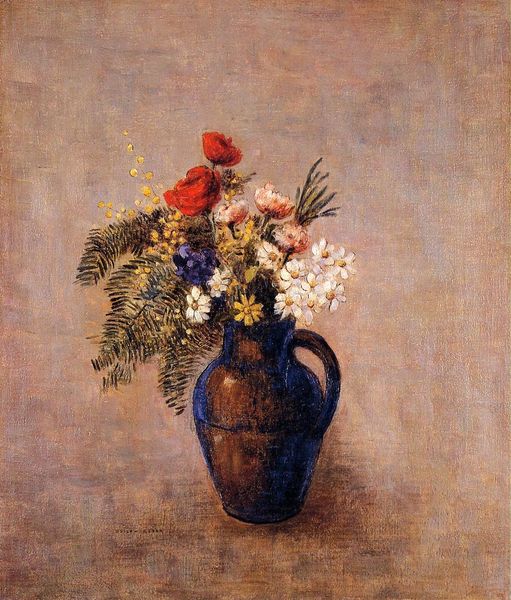
Copyright: Public domain
Curator: Well, the first thing that leaps out is a feeling – a kind of dreamy nostalgia, a memory tinged with a golden light. The whole scene seems to shimmer, doesn’t it? Editor: It does. And if you're looking to understand more, we should discuss Odilon Redon's "Flowers in a Blue Vase," dating back to 1910, composed using oils and gouache. It represents a late period in Redon's work, shifting away from his earlier, darker lithographs into this explosion of colour. Curator: Explosion is exactly right. Like a muted firework display…or perhaps the memory of a summer meadow brought indoors. Redon really lets the colours sing, especially the reds that draw your eye straight away, don’t they? Editor: The use of vibrant colours here definitely signifies more than mere botanical illustration. We have to remember that throughout history, flowers, and the way they're presented, are loaded with symbolic meaning, often tied to fleeting beauty and the transience of life. Here they seem to want to transcend that fate through luminous paint. Curator: Exactly. There's this bittersweet tension – they're bursting with life, and yet… captured in a vase, framed, immortalized but cut off from the earth. Editor: Redon was deeply involved with Symbolist ideas, and I wonder about this vase itself. Usually, in flower paintings, the vase represents domesticity, containment…even the feminine. What is Redon hinting at by allowing its decoration to be muted and blending it tonally into the scene, making it more of a grounding element than a point of focus? Curator: Hmm, intriguing point! It feels almost like the flowers are trying to escape the confines of the vase, and thus societal or artifical constraint. Look at how wild the arrangement feels – it's not neatly arranged; it's almost aggressively alive. Like he's saying nature can't truly be contained, even by art. Editor: It’s that tension between containment and freedom, isn't it? It suggests that there is still some power, despite all efforts. This makes this an enduring image because it acknowledges, and defies, our desire to fix and preserve beauty and our need for freedom, if only metaphorically. Curator: So true. Redon, in a way, gives us a small arena to battle out what it means to desire permanence out of the impermanent. That’s the thrill of a great painting; it's not just the surface, but that hidden world, that personal, poetic grappling beneath it. Editor: Absolutely. Each brushstroke serves to capture the dance between symbols and their psychological meanings. In that regard, perhaps Redon captured an essential, perennial element of humanity.
Comments
No comments
Be the first to comment and join the conversation on the ultimate creative platform.



